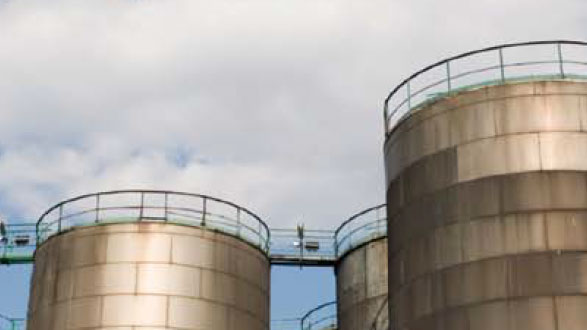DATE
3 min read • Chemicals
Chemical capital efficiency: success despite the crisis
Arthur D. Little reviews the performance of leading global chemicals players to identify competitive advantage in the crisis

In its recent study, "Capital efficient chemical companies," global management consultancy Arthur D. Little (ADL) analyses the capital strategies of the world's top 70 chemicals players, and finds that those firms that were able to manage their CAPEX during the last decade's economic boom are now looking beyond the downturn to strategically repositioning themselves for future growth.
According to the study, both capital-intensive enterprises with broad, multi-chemical portfolios and basic chemical manufacturing firms are more likely to weather economic downturns than labor-intensive specialist chemical companies. Because of their highly-specific cash flow needs, multi-chemical and basic chemical producers have a better grasp on managing their capital efficiency than the less capital-intensive specialist firms. The study urges chemical companies to merge two basic business processes - margin improvement and fixed asset optimization - to achieve successful long-term growth.
Businesses realize lasting margin increases through a combination of price increases, cost reductions, optimizing raw material costs, and changing their product and services mix. Equally, optimizing fixed costs can be tackled in a number of ways, including introducing lean manufacturing principles or relocating to more efficient production facilities. However in most chemical companies margin improvement and optimising fixed assets are not synchronized, and often conducted in isolation from one another. While profit optimization and a change in the product mix can be realized quickly, improving capital efficiency is a long-term undertaking. This leads to inefficient investment planning, hurting otherwise profitable chemicals businesses.
Edouard Croufer, ADL's Global Chemicals Practice Leader, comments: "Due to organizational hurdles, many chemicals companies have difficulty addressing the fundamental disconnect between improving margins and optimizing their fixed assets for lasting organizational improvements." "However, those companies with processes in place to effectively manage both margins and fixed assets have entered the recession with positive bank balances. They view the downturn as an opportunity to buy in new assets and competencies at a discounted price; generating even more cash for their businesses in the long-run." For chemicals companies looking to reverse their fortunes, ADL's report outlines three potential strategies for chemical companies to overcome the current crisis: optimizing; expanding; and surviving.
Download the full report, "Capital efficient chemical companies," here

3 min read • Chemicals
Chemical capital efficiency: success despite the crisis
Arthur D. Little reviews the performance of leading global chemicals players to identify competitive advantage in the crisis

DATE

In its recent study, "Capital efficient chemical companies," global management consultancy Arthur D. Little (ADL) analyses the capital strategies of the world's top 70 chemicals players, and finds that those firms that were able to manage their CAPEX during the last decade's economic boom are now looking beyond the downturn to strategically repositioning themselves for future growth.
According to the study, both capital-intensive enterprises with broad, multi-chemical portfolios and basic chemical manufacturing firms are more likely to weather economic downturns than labor-intensive specialist chemical companies. Because of their highly-specific cash flow needs, multi-chemical and basic chemical producers have a better grasp on managing their capital efficiency than the less capital-intensive specialist firms. The study urges chemical companies to merge two basic business processes - margin improvement and fixed asset optimization - to achieve successful long-term growth.
Businesses realize lasting margin increases through a combination of price increases, cost reductions, optimizing raw material costs, and changing their product and services mix. Equally, optimizing fixed costs can be tackled in a number of ways, including introducing lean manufacturing principles or relocating to more efficient production facilities. However in most chemical companies margin improvement and optimising fixed assets are not synchronized, and often conducted in isolation from one another. While profit optimization and a change in the product mix can be realized quickly, improving capital efficiency is a long-term undertaking. This leads to inefficient investment planning, hurting otherwise profitable chemicals businesses.
Edouard Croufer, ADL's Global Chemicals Practice Leader, comments: "Due to organizational hurdles, many chemicals companies have difficulty addressing the fundamental disconnect between improving margins and optimizing their fixed assets for lasting organizational improvements." "However, those companies with processes in place to effectively manage both margins and fixed assets have entered the recession with positive bank balances. They view the downturn as an opportunity to buy in new assets and competencies at a discounted price; generating even more cash for their businesses in the long-run." For chemicals companies looking to reverse their fortunes, ADL's report outlines three potential strategies for chemical companies to overcome the current crisis: optimizing; expanding; and surviving.
Download the full report, "Capital efficient chemical companies," here



